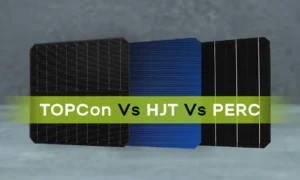The widespread adoption of cloud computing and mobile devices in recent years has put immense strain on traditional centralized server architectures. With more and more internet traffic coming from remote locations and mobile devices, the distances between users and centralized cloud data centers have caused latency issues, connection failures and poor user experiences. However, a new development called edge servers is helping to alleviate these problems by distributing computing power and content closer to where users are located.
Let’s dive deep into this blog and learn how edge servers are changing the way we use the internet.
Reducing Latency
By placing computational resources in locations much nearer to end users, edge servers have vastly reduced latency for internet-based applications. With content being served from edge nodes within milliseconds rather than seconds from distant cloud data centers, users can access data and apps nearly instantly.
Improving Mobile Experiences
Mobile applications in particular have benefited, as edge servers ensure optimum performance for data-hungry smartphones. Tablets and other mobile devices that might otherwise experience lag, interruptions or slow load times when connected to faraway clouds benefit from it.
Enabling New IoT Use Cases
The low latency of edge solutions is also enabling new types of internet-connected devices and services that simply would not be viable with traditional cloud architecture. Real-time systems like self-driving cars, immersive augmented reality or remote surgery equipment demand responses within milliseconds, not seconds.
AI and Analytics at the Edge
Performing AI/ML/DL modeling and analysis at the edge over local sensory IoT data in real-time helps extract maximum value. Edge enables analytics and insights anywhere without moving petabytes of data to centralized cloud locations first, which is faster and more cost-effective for resource-constrained devices.
Optimized App Delivery
Edge CDNs boost the delivery of software updates and apps by caching them close to end points. By optimizing delivery based on network conditions and user location, Edge minimizes app download times, resulting in better user experiences and engagement.
Low-Power Device Support
Edge opens up new frontiers by supporting battery-constrained devices and sensors connected over LPWAN technologies. It allows IoT and mobile devices to run intensive tasks locally by offloading processing and analysis to nearby edge servers instead of the power-hungry cloud.
Supercharged Serverless Computing
Edge expands the potential of serverless computing by enabling highly responsive functions and microservices to run directly from edge locations instead of centralized cloud data centers. This makes serverless execution nearly instantaneous for real-time applications.
Offloading Cloud Infrastructure
By taking over basic processing and caching functions at the local level, edge servers are easing congestion in centralized cloud data centers. This distributed model allows clouds to focus on intensive backend tasks while edges handle routine frontend operations closer to end points.
Improving Network Efficiency
- By distributing workload processing to edge nodes positioned at the network fringe, far less data needs to travel over the bandwidth-heavy backbone infrastructure connecting distant cloud data centers.
- Edge servers can cache frequently reused content locally and only transmit incremental updates instead of full files, packets or streams. This significantly reduces congestion on long-haul network routes.
- Edge computing also enables new optimization techniques like traffic engineering at the network edge through multi-access edge computing (MEC). MEC allows mobile network operators to consolidate resources and intelligently manage traffic flows near access points.
- With streamlined “last mile” connectivity, networks see improved throughput, and carriers achieve higher utilization of existing spectrum assets.
- Overall network scale also increases as edges can support high concurrent user and device loads without overloading central systems.
Coping with Intensive Workloads
Events that surge network traffic, such as major sporting matches or emergency responses, can overwhelm even large cloud facilities. But edge servers deployed temporarily at local “hot spots” can absorb and process excess demand without overloading central systems.
Enhancing Data Privacy
- By processing user and device data at the local edge level within the same region or even municipality as its origin, edge solutions intrinsically enhance privacy.
- Sensitive personal information does not have to leave its geographic vicinity when handled at the network edge, compared to traversing international borders to make distant cloud trips.
- Edge architectures allow certain types of usage data, biometric inputs, location details or personally identifiable information to remain stored in close proximity to end users. This localized approach makes it easier for technology providers and enterprises to comply with stringent new privacy laws as protected data travels shorter distances under fewer jurisdictional domains.
Overall, edge servers bring data privacy full circle back to where it was originally generated.
Facilitating Low-Latency Industries
Mission-critical domains like financial trading, media and entertainment, and manufacturing are moving workloads to the edge for competitive advantage. Millisecond reactions are the difference between profit and loss in high-frequency trading, for example.
Paving the Way for 5G
The responsiveness of 5G networks will turbocharge real-time edge applications, but new edge infrastructure is first needed to develop and optimize these services. Major tech players see edge as the key to unlocking 5G’s full transformative potential across industries.
Driving Innovation at the Edge
- As the transformative potential of edge networks becomes widely demonstrated, developers explore ever more creative uses of distributed edge intelligence.
- Startups experiment with novel clustered edge applications spanning gaming, VR/AR, urban monitoring and predictive maintenance.
- Entrepreneurs innovate custom hardware designs like plug-and-play edge appliances for convenient onboarding into existing infrastructures.
- New programming frameworks abstract away the complexities of coordinating workloads across disparate edge infrastructures.
- Marketplaces emerge for portable, cloud-like edge services that can run anywhere.
- Standardized edge APIs and edge-as-a-service platforms encourage rapid prototyping of next-gen low-latency applications at the network edge.
- With so many opportunities now unlocked, the true wave of innovation has only just started in the burgeoning field of edge computing.
Key Takeaways
In conclusion, edge computing represents a profound shift taking place in modern network architectures. By distributing processing power and content storage closer to end users, edge servers are fundamentally changing the way we experience and use the internet. Lower latency, higher efficiency and location awareness will power cutting-edge applications and fuel further disruption across technology and business. The edge is indeed where innovation is happening.
Read More: 13 Reasons to Embrace Client Virtualization Storage Servers














